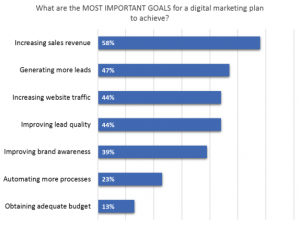
Today’s recruiters know high-volume hiring isn’t an easy task.
It wouldn’t be a stretch to say that the talent selection industry is not just ready, but ripe for talent assessment tools.
However, incorporating data-driven tools like pre-hire assessments into the talent selection process doesn’t mean nudging recruiters out of relevancy. Rather, it gives recruiters the power to make decisions more quickly and accurately without unintentionally indulging human bias.
Recruiters and Pre-Hire Assessments
Researchers Mitchell Hoffman, Danielle Li, and Lisa Kahn analyzed the success of recruiting manager discretion versus predictive talent assessment tests, as measured by job tenure. The results, reported in Discretion in Hiring, showed that between pre-hire assessment testing displayed the stronger correlation.
Companies that relied solely on the assessment test results saw a 15% increase in the tenure of their hires. In fact, this number was reduced by 5% when hiring managers were given the option to make exceptions and hire some candidates that did not score high on the pre-hire tests.
This example supports the copious evidence that talent assessment software allows recruiters and organizations to select job candidates with a much higher degree of predictive accuracy than other hiring tools.
The Pressures of the Recruiter
Recruiters are responsible for attracting, screening, and identifying top talent. However, they are also human, and the amount of data recruiters deal with on a daily basis is overwhelming. Even seasoned professionals have a finite capacity for clearheaded decision-making.
In high-volume hiring environments, recruiters contend with a number of obstacles that challenge their ability to identify top talent consistently, including:
- Massive Workloads –Many recruiters work with dozens of clients or internal stakeholders and process thousands of applicants a week. In an effort to hit a low time-to-hire goal, recruiters are often forced to scan resumes, briefly engage with the candidate and make snap decisions.
- Difficult to Measure Effectiveness– Most recruiters rely on stats like time-to-hire, cost-to-hire and offer/acceptance ratio to determine effectiveness. Companies, on the other hand, aim more for quality-of-hire – a standard that many recruiters find too intangible to measure accurately. Since every company’s culture and goals are different, the talent assessment solution must take these variables into account.
- Difficult to Scale – Even when a recruiter has great success for a client, it’s difficult to replicate the process to guarantee future success. Scaling up would mean adding more recruiters to handle increased volumes, which would be costly and time-intensive, as it would require training and oversight. Additionally, there’s no guarantee quality of hire would or could be maintained across the recruiting team, as not every recruiter performs and makes decisions the same way.
The Effectiveness of Pre-Hire Assessments
Employee assessment tests aren’t new – they’ve actually been around for quite a while. But the combination recent technological advances and better scientific understanding of human development and personality have enhanced both the precision and pervasiveness of these tools. Additionally, assessment tests can break down many of the barriers that have been preventing recruiters from identifying top talent frequently and accurately:
- Overwhelming Workloads are More Manageable – The latest technology can assess and provide predictive hiring recommendations for thousands, if not millions of applicants every day. There is no work overload issue for talent assessment software, which makes it perfect for both large and small companies. Additionally, talent assessment solutions that are tailored specifically to your business culture and operating goals, like those developed by FurstPerson, provide unprecedented levels of accuracy and predictive validity.
- Analyze the Entire Employee Lifecycle – The combination of pre-hire assessments and post-hire performance analysis allows managers and HR departments to track the quality of hire throughout the entire employee lifecycle and prove the predictive value of the assessments every day. This valuable data allows companies to improve their quality of hire and measure ROI accurately.
- Access Unbiased and Consistent Data – The beauty of assessments is that they don’t suffer from human judgment biases or fatigue-driven error. These tools allow organizations to build a data-driven predictive model that assesses each candidate on an even playing field, making it easier to quickly find, hire, and keep top talent.
Historically, many companies have relied on recruiters to handle the entire talent selection process. However, if you’re hoping to snatch and retain quality hires, you need data-driven tools to gauge whether or not candidates can do what’s required to thrive in a specific job role.
Some recruiters might argue that an employee’s performance is more contingent upon the coaching and direction they’re given by their superiors once they’re hired.
While coaching certainly has an impact, using pre-hire tools to assess applicants beforehand, and then reporting post-hire performance information to recruiters, allows these teams to spot pre-hire behaviors that can be used to predict on-the-job performance.
By incorporating information provided by data-driven tools into the recruiting process, candidates’ skills, knowledge, abilities and behaviors can be more clearly linked to performance. And in a business climate – and a culture – increasingly dominated by data-based decision-making, equipping recruiters with the information provided by talent assessments allows these teams to procure a larger number of high-quality hires over time, which can increase the recruiting team’s impact on an organization as well as the satisfaction of internal stakeholders with recruitment efforts.
Business & Finance Articles on Business 2 Community
(51)






